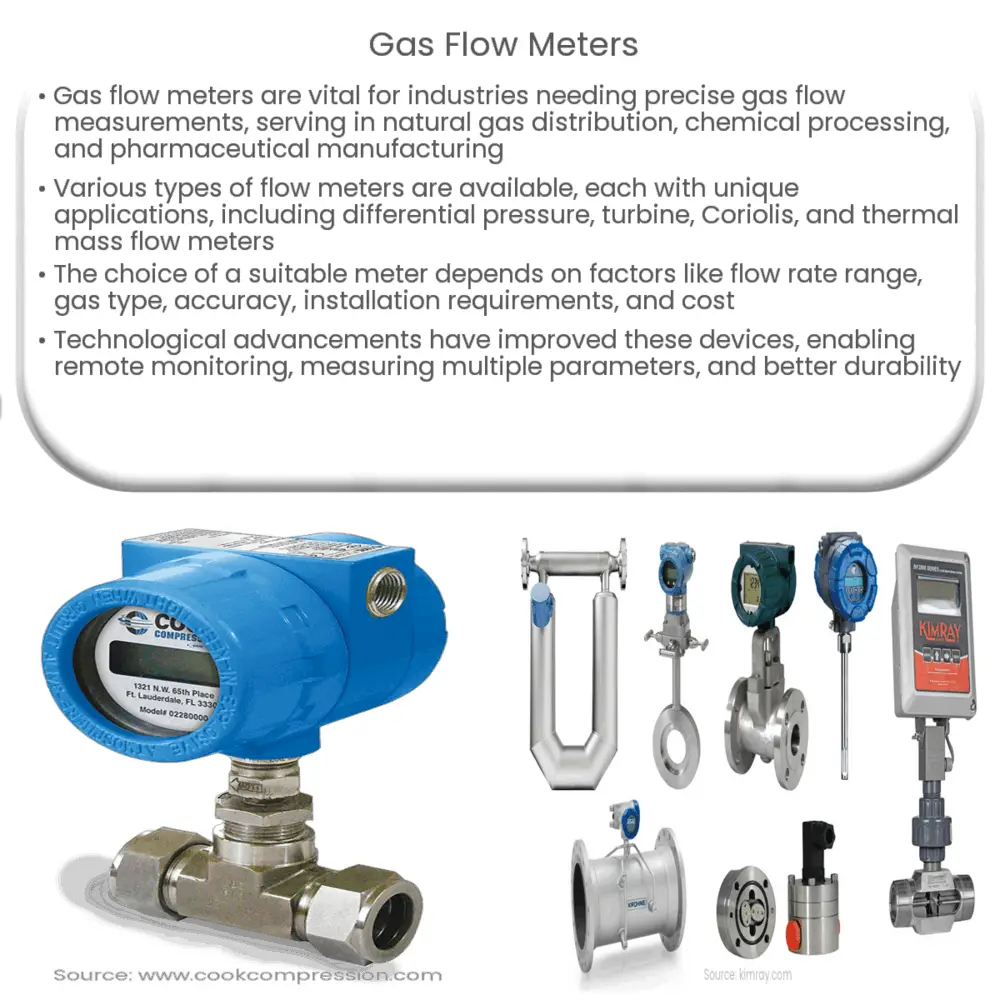Explore gas flow meters, their types, applications, and selection criteria. Learn about advancements in technology and their role in various industries.

Gas Flow Meters: An Essential Tool for Accurate Measurement and Control
Introduction
Gas flow meters are critical devices for various industries that rely on the precise measurement and control of gas flow rates. These meters have a wide range of applications, including natural gas distribution, chemical and petrochemical processing, and pharmaceutical manufacturing. This article will provide an overview of gas flow meters, the different types available, their applications, and factors to consider when selecting a gas flow meter.
What is a Gas Flow Meter?
A gas flow meter is a device that measures the volume or mass flow rate of a gas through a pipe or a closed conduit. It helps monitor and control the flow of gases in various processes, ensuring optimal performance and efficiency. The measured data can also be used for billing purposes, leak detection, and process optimization.
Types of Gas Flow Meters
There are several types of gas flow meters, each with its unique operating principle and application suitability. Some of the most common types include:
1. Differential Pressure Flow Meters
Differential pressure (DP) flow meters measure the flow rate by calculating the pressure difference across a constriction in the flow path. The constriction, such as an orifice plate or a Venturi tube, creates a pressure drop, which is proportional to the flow rate. DP flow meters are widely used due to their simplicity, low cost, and reliability.
2. Turbine Flow Meters
Turbine flow meters measure the flow rate by analyzing the rotation of a turbine or impeller placed in the flow path. The rotational speed of the turbine is proportional to the flow rate, allowing for accurate flow measurements. Turbine flow meters are known for their high accuracy, quick response time, and suitability for clean gases.
3. Coriolis Flow Meters
Coriolis flow meters measure mass flow rates using the Coriolis effect, which causes a slight deflection in the flow path of the gas due to its mass. The deflection is proportional to the mass flow rate, allowing for accurate measurements. These meters are highly accurate and suitable for measuring gases with varying densities, making them ideal for a wide range of applications.
4. Thermal Mass Flow Meters
Thermal mass flow meters measure gas flow rates by analyzing the heat transfer between a heated sensor and the flowing gas. The amount of heat dissipated by the gas is proportional to its mass flow rate. These meters are advantageous because they can directly measure mass flow rates without the need for additional pressure or temperature compensation.
Applications of Gas Flow Meters
Gas flow meters have a wide range of applications across various industries. Some key applications include:
- Natural gas distribution and measurement
- Chemical and petrochemical processing
- Pharmaceutical manufacturing
- Environmental monitoring and emissions control
- Industrial gas management
Selecting the Right Gas Flow Meter
Choosing the appropriate gas flow meter for a specific application is crucial for obtaining accurate and reliable measurements. Several factors should be considered when selecting a gas flow meter, including:
- Flow rate range: The meter should be able to handle the minimum and maximum flow rates required for the application.
- Gas type and composition: The meter should be compatible with the gas being measured and its specific properties, such as viscosity, density, and corrosiveness.
- Accuracy and repeatability: The meter should provide the required level of measurement accuracy and repeatability for the specific application.
- Installation requirements: The meter should be suitable for the available space and installation conditions, such as pressure and temperature.
- Maintenance and calibration: The meter should have a low maintenance requirement and be easy to calibrate to ensure consistent performance.
- Cost: The meter should fit within the budget for the project, considering both the initial investment and ongoing operating costs.
Advancements in Gas Flow Meter Technology
Recent technological advancements have significantly improved the performance and capabilities of gas flow meters. Some notable developments include:
- Smart meters: Modern gas flow meters often incorporate digital technologies and advanced communication protocols, allowing for remote monitoring, control, and data analysis.
- Multi-parameter meters: Some gas flow meters can measure multiple parameters simultaneously, such as mass flow, volumetric flow, temperature, and pressure, providing comprehensive process data.
- Improved materials and designs: Advances in materials science and engineering have led to more durable, reliable, and efficient gas flow meters that can withstand harsh conditions and aggressive gases.
- Wireless connectivity: Wireless communication options are increasingly available for gas flow meters, simplifying installation and enabling real-time data access and remote monitoring.
Conclusion
Gas flow meters are essential devices for a wide range of industries that rely on accurate and reliable gas flow measurements. Understanding the different types of gas flow meters, their applications, and factors to consider when selecting a meter is crucial for ensuring optimal performance and efficiency. With ongoing advancements in technology, gas flow meters will continue to play a critical role in various industrial processes and contribute to improved process control, safety, and environmental compliance.

